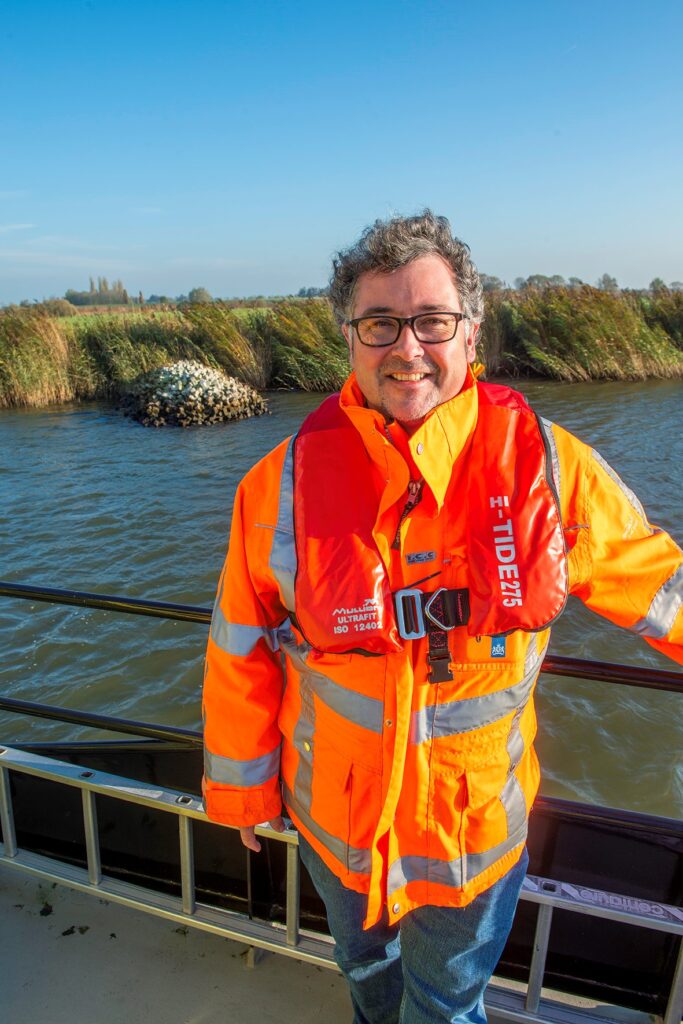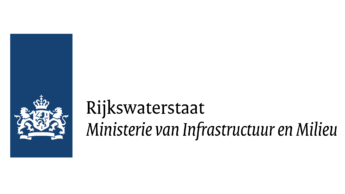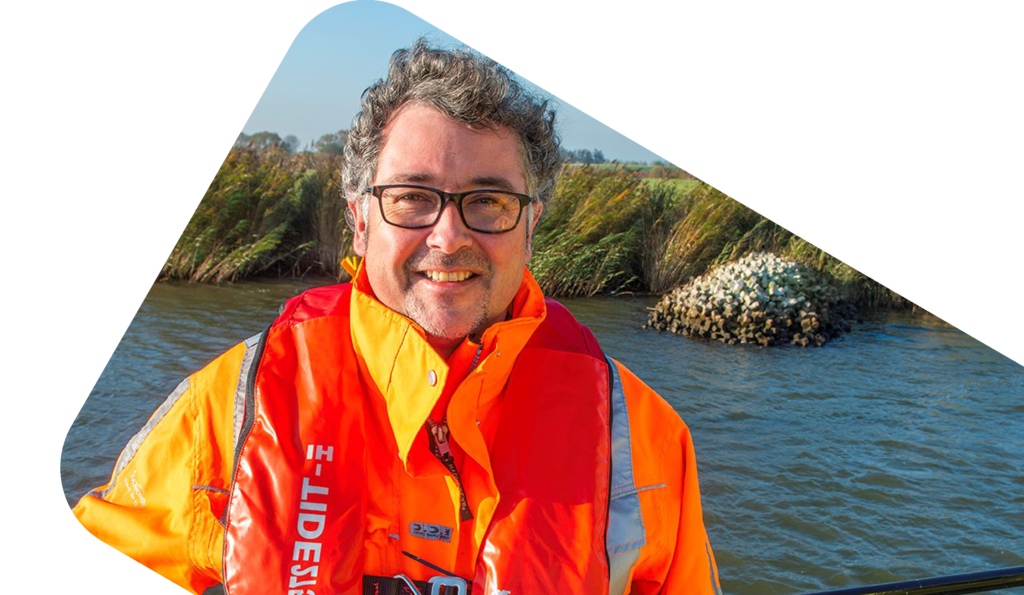
“Getting Beeliners to say something about sensors has been a golden touch.”
Yuri Wolf – Innovationmanager River Management

About Rijkswaterstaat
Rijkswaterstaat is part of the Ministry of Infrastructure and Water Management. It is an executive agency, which means that Rijkswaterstaat receives orders from the ministry to carry out certain work. These assignments depend on government policy.
As an executive organisation, Rijkswaterstaat is responsible for both the construction and maintenance of roads and waterways. This consists of the main road network, the main waterway network and the main water system. Rijkswaterstaat outsources certain tasks. For example, road construction and maintenance are often outsourced. The yellow cars that are often visible on the roads take care of securing incidents and helping with salvage operations. They mainly deal with security work and incident management. The yellow vessels have a policing task on top of that.
Yuri Wolf works within the Innovation and Market department. This falls under procurement at Rijkswaterstaat. His drive is to look at innovations with scaling-up glasses. Yuri is creating an approach to buy mature innovations in the future.

The issue
One of Rijkswaterstaat’s services is the management and maintenance of the IJssel and Twente canals. The philosophy here is to maintain. This means that the condition absolutely must not get worse, but it does not have to get better either.
Maintenance of the waterways consists of two forms. Fixed maintenance which mainly consists of regularly recurring work, such as mowing the grass once or twice a year. Variable maintenance is painting or replacing lights. This way of working inspired the idea of thinking about innovations within maintenance.
Rijkswaterstaat created a learning space. This is a contractual experimentation space where it is possible to work together on innovations for certain tasks on an equal footing. This made it possible for Beeliners to join the experimentation. In fact, Beeliners had submitted an innovation with sensors to the innovation desk of Rijkswaterstaat. At the time, Yuri Wolf was working on the flexible groyne project and saw a connection. On this, Beeliners was invited to talk further with Rijkswaterstaat.
Collaboration with Beeliners
The flexible groyne project involved several parties. For example, Rijkswaterstaat mainly took the regional role. All parties within this innovation team had joint responsibility. Beeliners mainly cooperated with Deltares within the project. Deltares’ main task was to monitor and retrieve data. This involved using their knowledge and expertise.
Consultation moments were scheduled every fortnight. This was based on a kind of sprint concept. During these consultation moments, Yuri was responsible for taking minutes and keeping track of action points. These documents and action points were shared via an online environment, so everyone always had access to the latest developments.
“I would describe the cooperation with Beeliners as ‘nice and flat’, ‘just act normal’. There was a shared grief in getting and bringing knowledge and expertise, but also in creating ownership with money, commitment and co-writing and collaborating on the project.”
Yuri Wolf

The result
The flexible groyne project is now underway. Flexible groynes are constructed from Xstream blocks. The shape of the groynes are modular, making them adaptable and manoeuvrable. In material use, it is circular.
A groyne with Xstream blocks is partially permeable. This allows water and sediment to flow between the blocks without the groyne losing its function. These open spaces also have a positive impact on the habitat for various organisms.
Thanks to Beeliners, the flexible groynes have been made “smart”. By using gyroscopes, impact and temperature sensors, the impact of the flexible groyne can be accurately determined under the influence of external factors.
What the customer has to say
Yuri Wolf: “Within the learning spaces, getting Beeliners to come in and share something about sensors has been a gold rush. All these experiences will be taken back to subsequent projects, because again sensors are needed.
In our follow-up project, Beeliners is participating again. Our next project is again about hydraulic engineering. The question is whether the original idea of autarkic sensors will work there. Can something be invented where we don’t need a power supply? The disadvantage of current sensors is that they require a hugely long power cable. This is a great exploration for the future.
I would describe the collaboration with Beeliners as ‘nice and flat’, ‘just act normal’. There was a shared grief in getting and bringing knowledge and expertise, but also in creating ownership with money, commitment and co-writing and collaborating on the project. My job is to keep all parties involved and avoid forgetting them. In the past, Rijkswaterstaat mainly dealt with contractors, little with suppliers. This was an innovation in our way of working. Now we know that working with suppliers is more important thanks to the knowledge and expertise they bring with them.”
Also innovate together?


